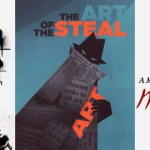I have never followed basketball. But as a young boy, I knew who Michael Jordan was. He was king—king of basketball, king of sports, and king of the media. Everybody knew him and everybody liked him. I heard all about him from the television and my friends. Now the closest I came to basketball was running the scoreboard for my school’s home games. I really didn’t care about the game and I never watched it on tv. But I knew Michael Jordan was a legend.
Then, during a party at a friend’s house, the television was on and the Bulls were playing. Even people like me who knew nothing about basketball knew that Jordan played for the Chicago Bulls. So I immediately tried to spot him. There he was! The legend! He took a shot and…he missed! It was a weird moment. “Does this guy actually miss? Look, he missed again!” If you had asked me if I thought Jordan made every shot, I would have given you the reasonable answer of “no.” But my first reaction upon seeing his failure was shock.
Fame distorts everything. It certainly distorts the recipient of the fame, though that is not the focus of this writing. And it distorts our perception of the famous person. Just like I would have told you that Michael Jordan didn’t make every shot, most of us would logically say that the famous are regular people just like you and me. But our hearts say otherwise. Have you been in the same room as a famous person? There’s that feeling of excitement at seeing them—a feeling you don’t feel for a “regular person.”
I’m not only writing about famous people. There’s a similar pattern that happens with famous artwork. I consider myself very well rounded in my knowledge of music, but I have my gaps. Pink Floyd is one of those legendary bands whose music I’ve explored very little. They have many classic albums and the one I hear referenced most is “The Wall.” One day I learned that the “we don’t need no education” song was from this album (Another Brick in the Wall, Part 2) and I thought, “Really? That song?”
Look, I get it. We’re talking about a concept album here and I’m taking the song totally out of context. My point is that the folklore surrounding this album put it on a pedestal in my mind with expectations that could never be met.
Not every piece of famous artwork is famous because of its exceptional quality, skill required to create, inspirational design, relevance, and important message. Many pieces are famous simply because they were pioneering in some way. A painting, though lacking the above-mentioned characteristics, may have inspired a new movement, or may be notable simply because of a specific novel characteristic. It documents a point in history and that gives the piece its value.
Dealing with critique of today’s art, we don’t deal with the fame of the piece as much as we deal with the fame of the artist. And while it is important to consider the work within the context of the artist’s previous works, it is wrong to assign greatness due to the artist’s past. Again, this is clearly seen in the world of music. Do most performers produce consistently great albums throughout the span of their career? Or do most come out strong with two or three albums and then slowly wane into mediocrity? There’s plenty examples on both spectrums. So while past success earns legitimate interest in future creations, it is not a factor in their critique.
There is a fine line to walk. Success puffs up and changes a person’s perspective. Put bluntly, consider how many celebrities slowly turn ridiculous as their fame increases. However, past success does indicate skill and understanding and that should not be totally written off. Still, the work needs to speak for itself—just as the work of an unknown should speak for itself.
Articles in this series on critique
- The Significance of Series
- The Farce of Familiarity
- The Bias of Background
- The Folklore of Fame



